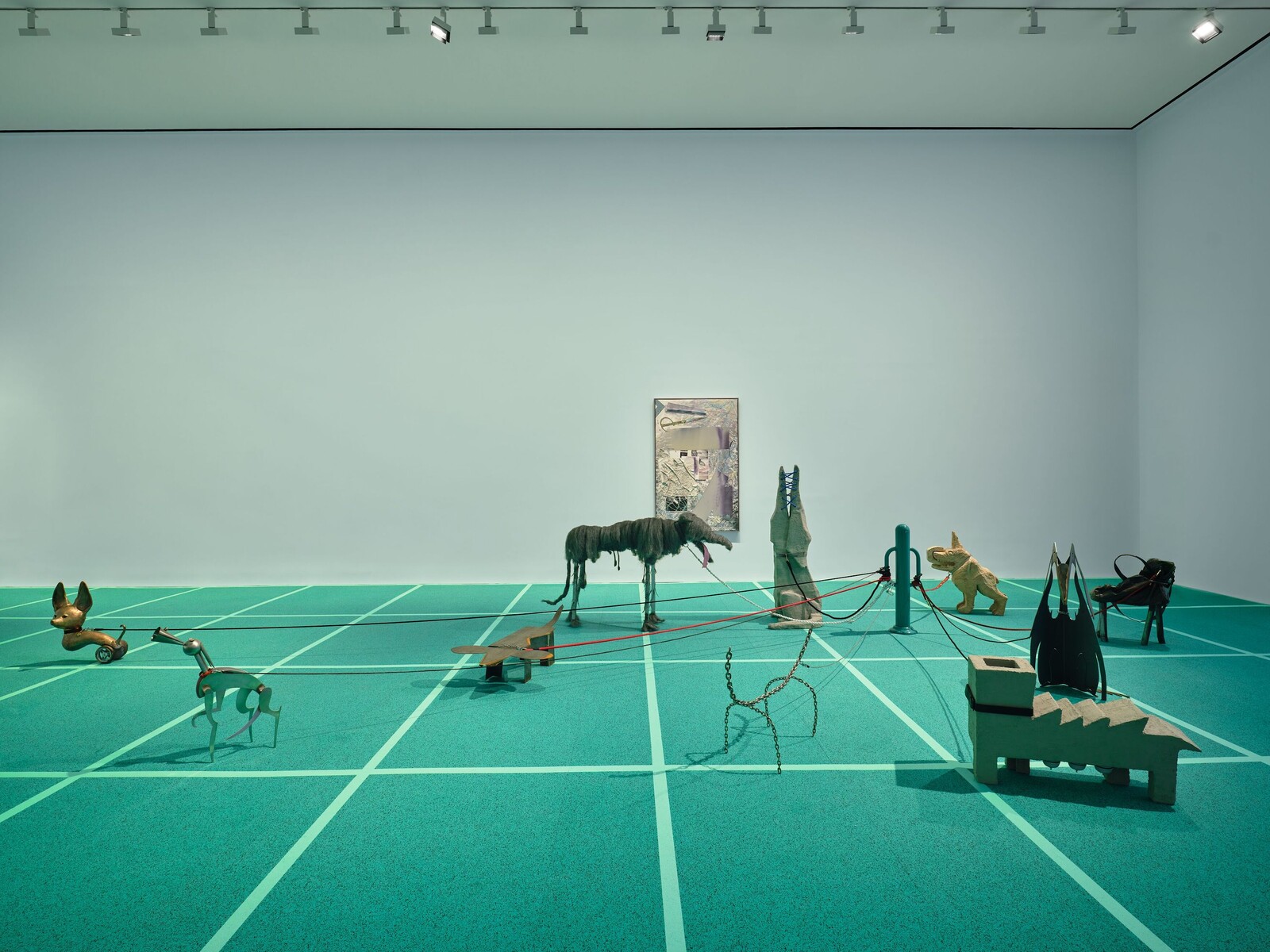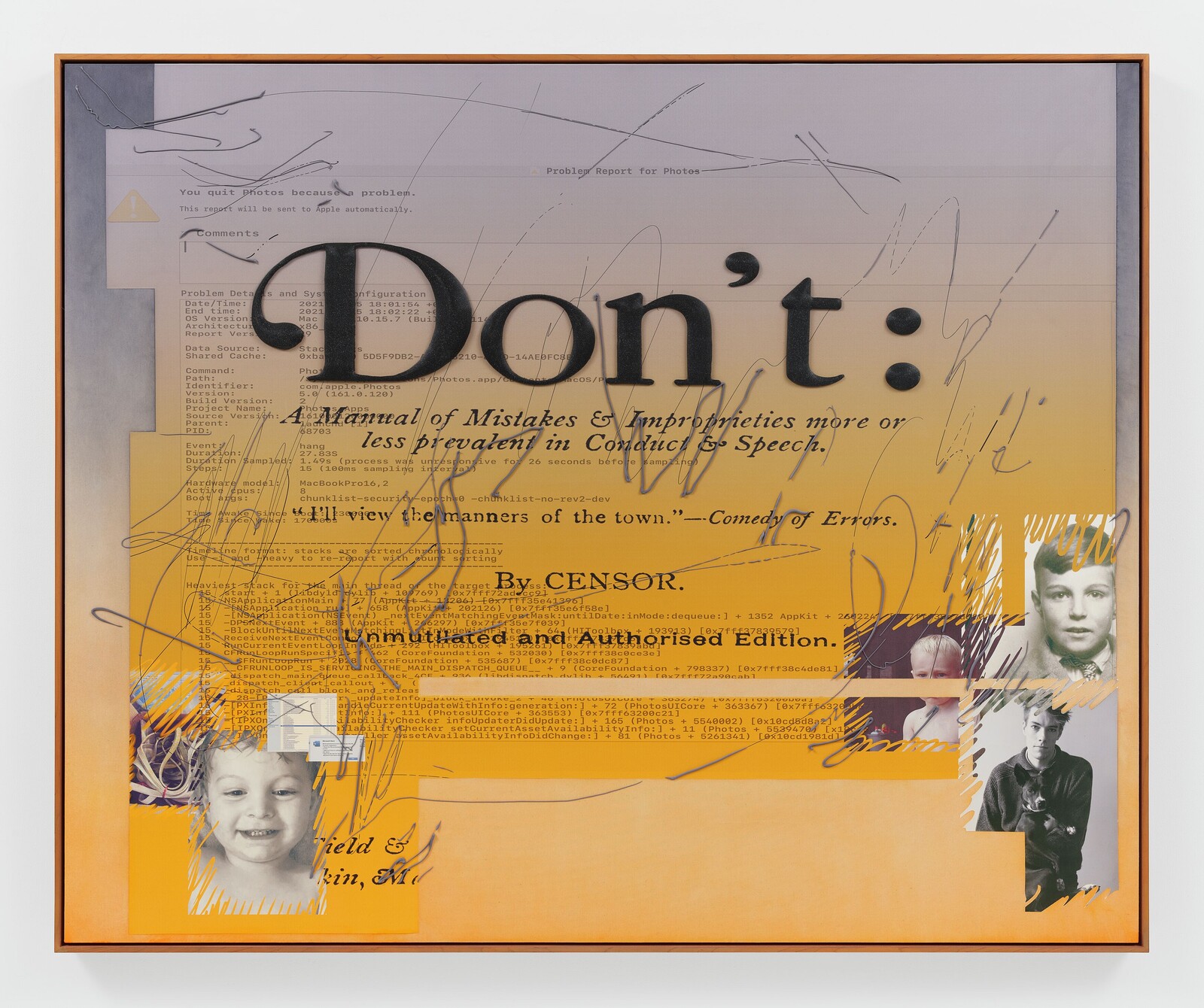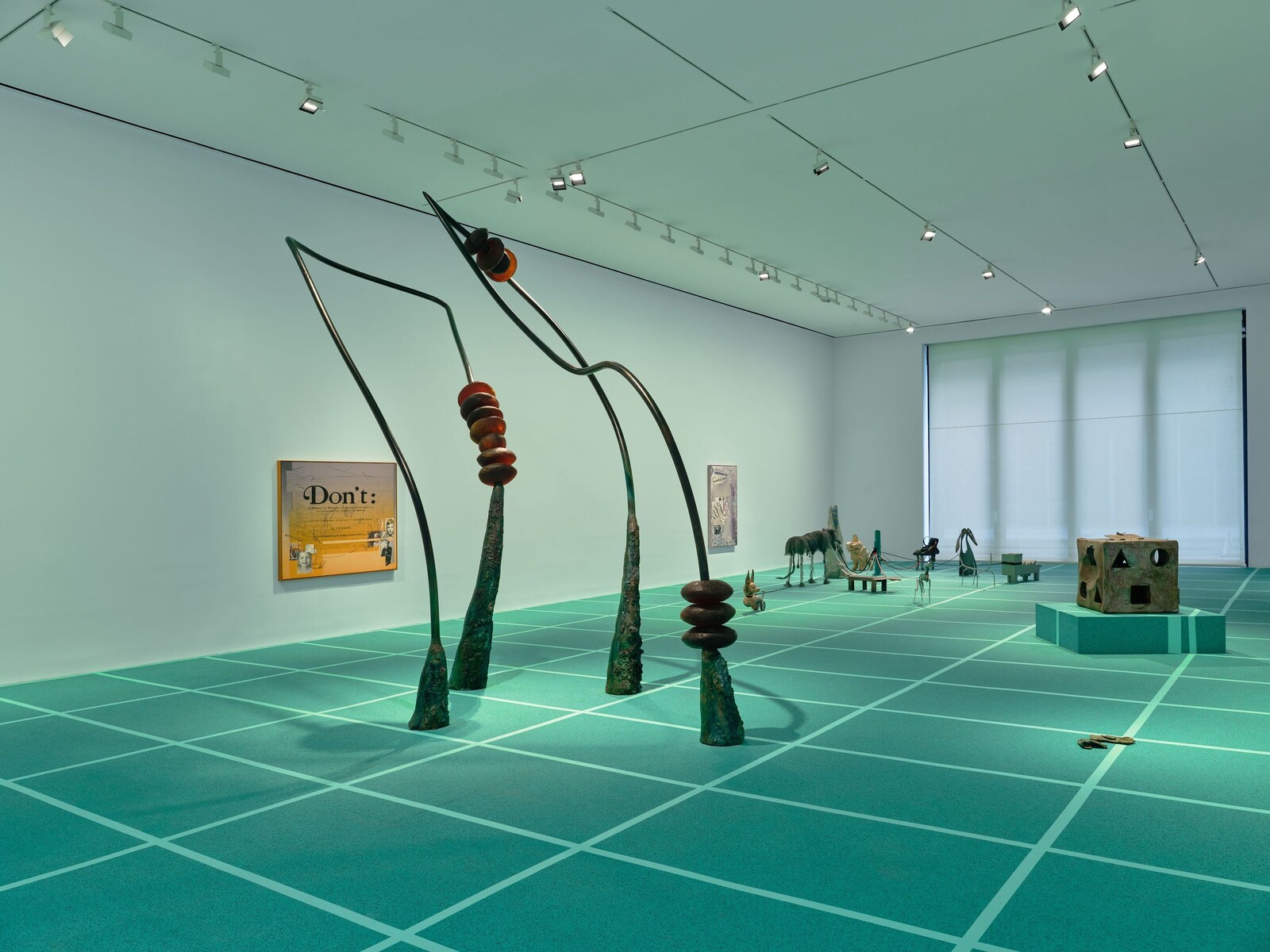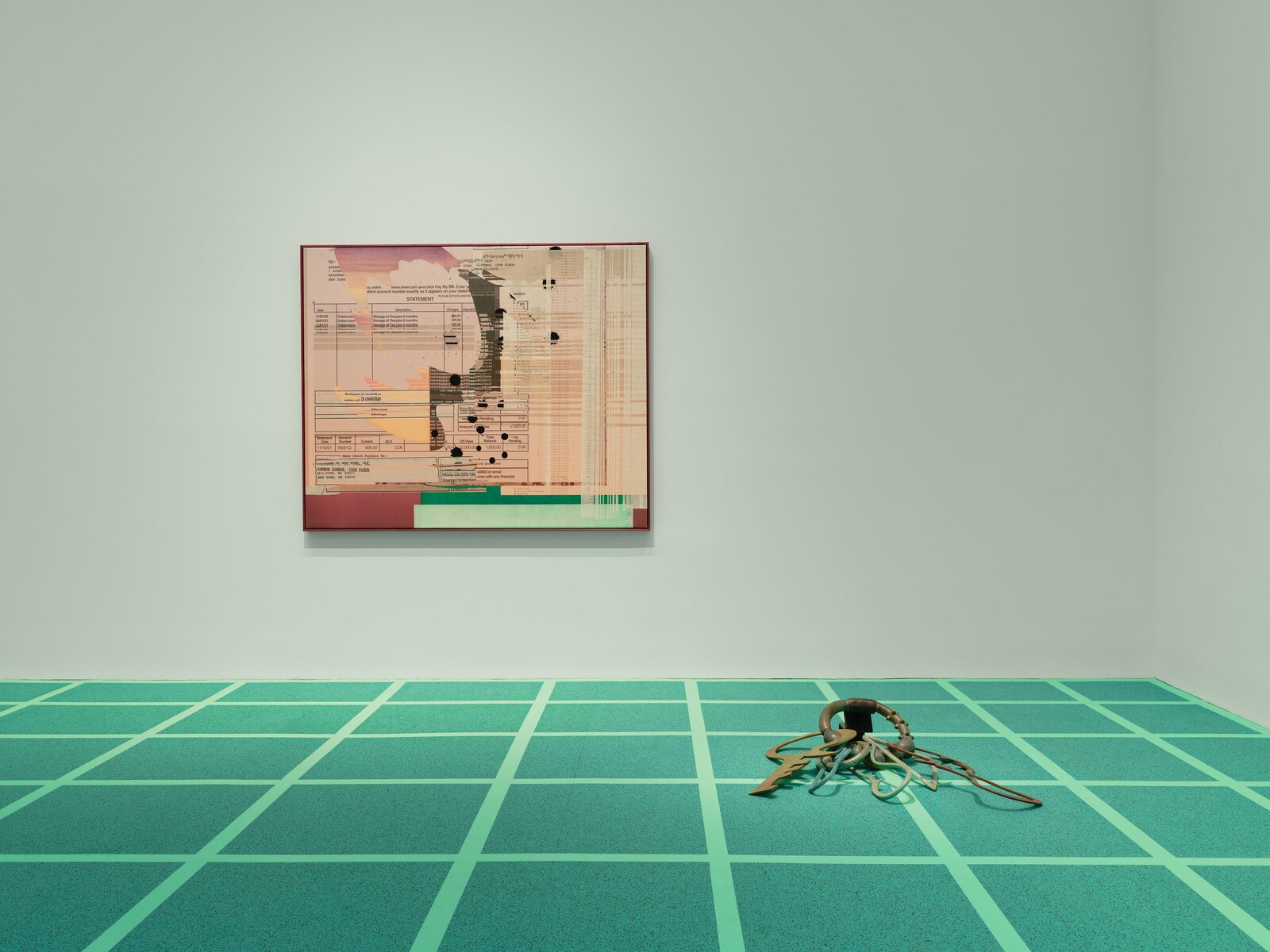Down the rabbit hole and rapidly fluctuating in size, the gigantic Alice cries a “pool of tears” in which, shortly afterwards, she nearly drowns. Camille Henrot invoked Lewis Carroll’s passage in Milkyways (2023), her book of essays on motherhood and art-making: “This push and pull of scale,” she wrote, “is something every mother experiences.”1 The French artist goes on to describe how parenting resurfaced her own repressed memories of childhood, implying that every adult contains a child. We can, perhaps, imagine Alice as representing both mother (large) and daughter (small).
In her first exhibition at Hauser & Wirth’s cavernous Chelsea space, Henrot produces comparably dramatic shifts in scale through oversized sculptures of toys and biomorphic abacuses, encouraging viewers to take the perspective of both adult and child. She covers the entire gallery with a padded and gridded green safety surface that resembles a “self-healing” cutting mat, a custom floor that unifies the disparate artworks as in a playground or a theater. Yet she has subtly distorted the grid, undermining the structuring order it purports to provide. If Henrot’s installation suggests a playscape, it is—like Wonderland—off-kilter, mysterious, and full of obstacles.
Greeting visitors at the exhibition’s entrance is a ragtag pack of ten life-sized dog sculptures, each leashed to a central post. As one does with artworks and pets, Henrot gives each a proper name and crafts them with individualizing styles. There are purebreds of steel and wood: the prancing, bugle-snouted Schoggi (2024); stoic Noé (2023) in Cubist sheet metal; and Francesco (2024), a slobbering, roughly carved relic. Others, like junkyard mutts, are composites of readymade objects, salvaged scraps, and synthetic resins: Herbert (2023), the Brutalist Capitoline Wolf with call bells for teats; shaggy Richelieu (2023) with a wire wool coat; and Margaret (2024), a floppy duffel bag on steel pipes. Symbols of learned subordination, they seem to wait obediently for their owner or walker to return.
These scrappy sculptures of pets without their humans elicit compassionate affection, an irrational concern for their safety. After all, domesticated animals are, like human children and by design, dependent on people for their sustenance and survival. As with much of Henrot’s recent work, the rest of the show explores the dynamics of care and dependency in parenting and childhood development. Two bronze sculptures of enlarged toys portray fears of abandonment and alienation. Tomber pour toujours (2023) depicts a soothing keychain teether that is, per the title, “forever falling,” whether dropped by clumsy hands or cast aside in a rehearsal of future rejections.
The darkly humorous Misfits (2022) is a scratched and dented sorting cube with a cylindrical peg angrily jammed into one of its square holes. The disturbing result, which resembles a battered emoji with a punctured eye and mouth agape, anthropomorphizes frustration and failure. Play generally expands possibilities, but Henrot’s sculpture demonstrates how this toy, designed to educate, limits them. Large enough for a small child, the box could also be a trap: a metaphor for how a comforting but restrictive conformity—fitting in—is trained into us from an early age.
Henrot bases her fantastical Abacus sculptures (all 2024) on counting and sorting toys that similarly support the development of fine motor skills. Two suggest subconscious visions of a maternal figure: The spindly arabesques of 1263 / 3612 (Abacus) evoke high-heeled shoes, with amber-hued beads scaling thin stilettos; while 73 / 37 (Abacus) is a swooping, nacreous wave of hair or fabric cradling two orbs that could be eggs, breasts, or eyes. The palindromic titles allude to the fungibility of numbers and our ability to read, and calculate, each sculpture from multiple angles. Yet with 347 / 743 (Abacus), that task is thwarted by bent and cinched rods that fix four beads—like the nearby dogs—in place. Towering over viewers, this monumental calculator transforms simple accounting into a daunting, insurmountable hurdle.
With her ongoing series of “Dos and Don’ts” paintings, Henrot further muddies the distinctions between care and discipline, education and training, independence and obedience. Centered around excerpts from antiquated etiquette manuals, the mixed-media collages also feature computer error messages, medical bills, studio notes, and family photographs, all obfuscated by childish scribbles and digitally-simulated brushstrokes. Busy and intentionally hard to read, they evoke cluttered desktops or the chaos of a mind flooded with to-do lists, bills to pay, and art to make.
While the series does not generally cohere into definitive statements about what “to do” or “not to do,” one painting encapsulates the risks and tensions of conforming to societal norms. Atop the crackling blue canvas of Dos and Don’ts - Do (The Word Out Loud) (2024), Henrot combines scans of literacy homework and texts on conflict management with a photograph of the artist training a puppy and a screenshot of wheat-pasted “defund the police” posters. The conflict to be managed here, and elsewhere in the exhibition, is between upholding the behavioral codes and conventions that keep society functioning and upending those that stifle and oppress. Some rules, Henrot reminds us, need to be broken.
Camille Henrot, “Mother of Tears,” in Milkyways (Berlin: Hatje Cantz, 2023), 97.




